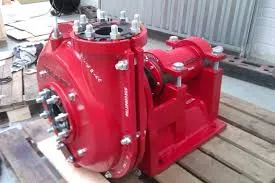Indonesian
- Afrikaans
- Albanian
- Amharic
- Arabic
- Armenian
- Azerbaijani
- Basque
- Belarusian
- Bengali
- Bosnian
- Bulgarian
- Catalan
- Cebuano
- Corsican
- Croatian
- Czech
- Danish
- Dutch
- English
- Esperanto
- Estonian
- Finnish
- French
- Frisian
- Galician
- Georgian
- German
- Greek
- Gujarati
- Haitian Creole
- hausa
- hawaiian
- Hebrew
- Hindi
- Miao
- Hungarian
- Icelandic
- igbo
- Indonesian
- irish
- Italian
- Japanese
- Javanese
- Kannada
- kazakh
- Khmer
- Rwandese
- Korean
- Kurdish
- Kyrgyz
- Lao
- Latin
- Latvian
- Lithuanian
- Luxembourgish
- Macedonian
- Malgashi
- Malay
- Malayalam
- Maltese
- Maori
- Marathi
- Mongolian
- Myanmar
- Nepali
- Norwegian
- Norwegian
- Occitan
- Pashto
- Persian
- Polish
- Portuguese
- Punjabi
- Romanian
- Russian
- Samoan
- Scottish Gaelic
- Serbian
- Sesotho
- Shona
- Sindhi
- Sinhala
- Slovak
- Slovenian
- Somali
- Spanish
- Sundanese
- Swahili
- Swedish
- Tagalog
- Tajik
- Tamil
- Tatar
- Telugu
- Thai
- Turkish
- Turkmen
- Ukrainian
- Urdu
- Uighur
- Uzbek
- Vietnamese
- Welsh
- Bantu
- Yiddish
- Yoruba
- Zulu
Telephone: +86 13120555503
Email: frank@cypump.com
Des . 05, 2024 16:52 Back to list
Understanding the Principles and Applications of Axial Flow Pumps in Various Industries
Understanding Axial Pumps Design, Functionality, and Applications
Axial pumps are a pivotal component in various industrial applications, particularly in the pumping of fluids where the flow rate needs to be significant, yet the pressure requirements are moderate. Unlike centrifugal pumps, which utilize radial forces to move fluids, axial pumps operate based on the principle of axial flow, where the fluid moves parallel to the pump shaft. This article delves into the design, functionality, and applications of axial pumps, providing a comprehensive understanding of their importance in both engineering and industrial settings.
Design Characteristics
Axial pumps are characterized by their unique design, which features a propeller-like impeller that draws fluid in along the axis of the pump. This impeller consists of blades that are usually pitched to efficiently convert rotational energy from the motor into fluid motion. The design of the impeller is crucial; the angle and number of blades are optimized to achieve the desired flow rates and efficiency.
The casing of an axial pump typically has a cylindrical shape, which aids in guiding the fluid flow in a straight line from the inlet to the outlet. The streamlined design minimizes turbulence and energy losses, enhancing performance. Additionally, axial pumps can be designed for various operational conditions, including different fluid types, temperature ranges, and pressures, making them versatile in their applications.
How Axial Pumps Work
The operation of an axial pump is quite straightforward. When the motor drives the impeller, it spins rapidly, drawing fluid into the pump through its inlet. The angled blades of the impeller impart kinetic energy to the fluid, pushing it axially—straight out of the outlet. This movement is not only efficient but also allows for high flow rates, making it suitable for applications where large volumes of liquid must be moved quickly.
One of the significant advantages of axial pumps is their ability to maintain flow even at low pressure
. Because they are designed to move fluids at a relatively consistent rate, they are less sensitive to changes in pressure compared to centrifugal pumps. This characteristic makes axial pumps ideal for processes such as irrigation, dewatering, and certain chemical manufacturing applications.axial pumps

Applications of Axial Pumps
Axial pumps are utilized across various industries due to their ability to handle large volumes of fluid with relatively low energy consumption. Some common applications include
1. Water and Wastewater Management Axial pumps are widely used in municipal water supply systems and wastewater treatment facilities. Their efficiency in moving large quantities of water makes them particularly suitable for these applications.
2. Agriculture In agricultural settings, axial pumps play a critical role in irrigation systems. They can efficiently transport water from sources like rivers or boreholes to fields, ensuring crops receive adequate hydration.
3. Marine and Industrial Uses Many ships and industrial facilities also employ axial pumps for cooling water circulation, ballast water management, and similar tasks. Their ability to handle fluctuating flows and maintain consistency is highly valued in these sectors.
4. Power Generation In power plants, axial pumps are often used for circulating water in cooling systems. Their design ensures that adequate cooling is maintained, which is vital for the efficiency and safety of power generation operations.
Conclusion
In summary, axial pumps represent an essential technology in fluid movement, characterized by their unique design and functionality that prioritize efficiency and high flow rates. Their diverse applications across water management, agriculture, marine, and power generation highlight their importance in contemporary industry. As technology continues to advance, the design and efficiency of axial pumps will likely evolve, further enhancing their role in sustainable practices and industrial innovation. Understanding the nuances of axial pumps enables engineers and operators to optimize their use, ultimately driving better performance and cost-effectiveness in various applications.
-
ISG Series Vertical Pipeline Pump - Chi Yuan Pumps Co., LTD.|High Efficiency, Low Noise, Durable
NewsAug.02,2025
-
ISG Series Vertical Pipeline Pump - Chi Yuan Pumps | High Efficiency, Low Noise
NewsAug.02,2025
-
ISG Series Vertical Pipeline Pump- Chi Yuan Pumps Co., LTD.|High Efficiency&Compact Design
NewsAug.02,2025
-
Heavy-Duty Mining Sludge Pumps - Wear-Resistant Slurry Handling
NewsAug.02,2025
-
Horizontal Split Case Pump with GPT-4 Turbo | High Efficiency
NewsAug.01,2025
-
ISG Series Pipeline Pump - Chi Yuan Pumps | High Efficiency, Durable Design
NewsAug.01,2025










